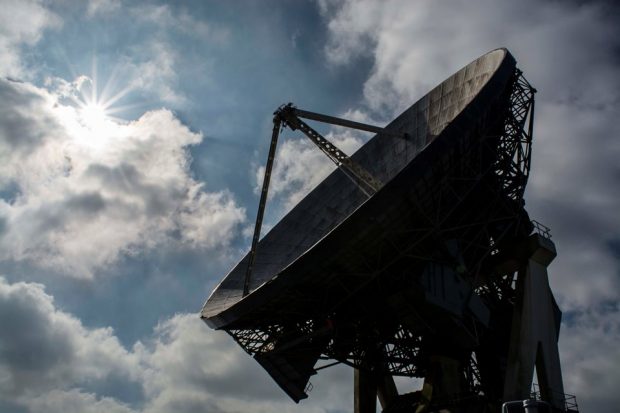On 23 July, 55 years ago, US president John F. Kennedy’s gave a historic press conference about the unprecedented capabilities of the previously launched Telstar satellite. His speech was, for the first time, transmitted via the satellite from the United States to Europe.
These signals – part of a series of tests for commercial broadcasting - were received by French satellite ground station Plemeur Bodou and by Aerial 1 (“Arthur”) at Goonhilly Earth Station in Cornwall. Arthur has a diameter of almost 26 m and was the world’s first open parabolic antenna for telecommunications.

The site and Aerial 1 were operated by the General Post Office at the time, before it then became part of BT in the 1980s. Today, the site is run by Goonhilly Earth Station Ltd., and Arthur is still going strong. After having its broken motor replaced with an equally old, but working model, the 1100 tonne structure is now able to move again smoothly and swiftly at up to 120° per minute.
Together with other antennas at Goonhilly, Arthur is now embarking on a second career. Instead of broadcasting TV signals or transmitting telephone calls, the dish is being repurposed for radio astronomy and will be connected to the e-Merlin network via fibre optic cables.
How does radio astronomy work? Large antennas like Arthur can receive even faint radiation sent out by objects far away in the universe, in this case radio waves. Generally speaking, larger antennas can detect weaker signals. Because it is impractical to build antennas over a certain size, so called virtual radio interferometry can help to improve signal detection without the need of bigger dishes. Instead, many antennas at large distances from each other (like those in the e-Merlin network) detect the signals, and the resulting data can be analysed in clever ways to simulate a better signal as if it had come from one, really large dish.
Arthur will contribute to improving our understanding of the formation of stars, observing activity in other galaxies, and studying black holes.
The site including this legendary antenna was purchased by Goonhilly Earth Station Ltd. under CEO Ian Jones in 2014. Since then, staff have been working hard to bring antennas like Arthur back to life, and to ensure a continuing legacy of this historic site on the Lizard peninsula in Cornwall. In contrast to the Telstar satellite, and despite being Grade II listed, Aerial 1 is still far from retirement. Instead, once again, it is at the forefront of technological and scientific discovery, and we wish Arthur all the best for the future!
Dr Kat Hickey– Business Development and Training Manager at Goonhilly Earth Station Ltd.
Leave a comment